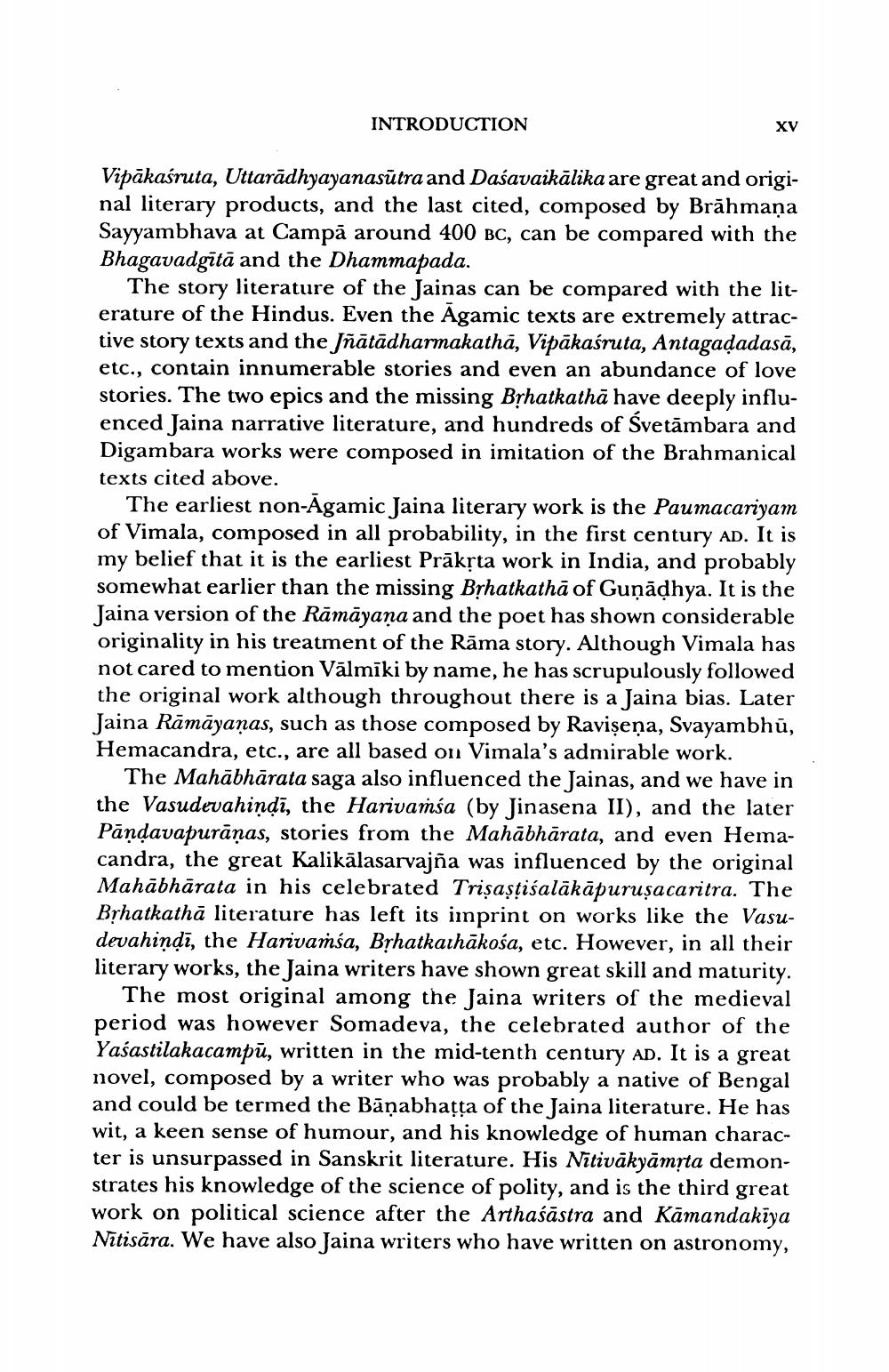________________
INTRODUCTION
XV
Vipākaśruta, Uttarādhyayanasūtra and Daśavaikālika are great and original literary products, and the last cited, composed by Brāhmaṇa Sayyambhava at Campā around 400 BC, can be compared with the Bhagavadgītā and the Dhammapada.
The story literature of the Jainas can be compared with the literature of the Hindus. Even the Agamic texts are extremely attractive story texts and the Jñātādharmakathā, Vipākaśruta, Antagadadasā, etc., contain innumerable stories and even an abundance of love stories. The two epics and the missing Byhatkathā have deeply influenced Jaina narrative literature, and hundreds of Svetāmbara and Digambara works were composed in imitation of the Brahmanical texts cited above.
The earliest non-Agamic Jaina literary work is the Paumacariyam of Vimala, composed in all probability, in the first century AD. It is my belief that it is the earliest Prākrta work in India, and probably somewhat earlier than the missing Bịhatkathā of Guņādhya. It is the Jaina version of the Rāmāyaṇa and the poet has shown considerable originality in his treatment of the Rāma story. Although Vimala has not cared to mention Vālmīki by name, he has scrupulously followed the original work although throughout there is a Jaina bias. Later Jaina Rāmāyanas, such as those composed by Ravisena, Svayambhū, Hemacandra, etc., are all based on Vimala's admirable work.
The Mahābhārata saga also influenced the Jainas, and we have in the Vasudevahiņdī, the Harivamsa (by Jinasena II), and the later Pāņdavapurāņas, stories from the Mahābhārata, and even Hemacandra, the great Kalikālasarvajña was influenced by the original Mahābhārata in his celebrated Trisastiśalākāpurusacaritra Brhatkathā literature has left its innprint on works like the Vasudevahindi, the Harivarśa, Brhatkathākośa, etc. However, in all their literary works, the Jaina writers have shown great skill and maturity.
The most original among the Jaina writers of the medieval period was however Somadeva, the celebrated author of the Yaśastilakacampū, written in the mid-tenth century AD. It is a great novel, composed by a writer who was probably a native of Bengal and could be termed the Bānabhatta of the Jaina literature. He has wit, a keen sense of humour, and his knowledge of human character is unsurpassed in Sanskrit literature. His Nītivākyāmịta demonstrates his knowledge of the science of polity, and is the third great work on political science after the Arthaśāstra and Kāmandakiya Nitisāra. We have also Jaina writers who have written on astronomy,




